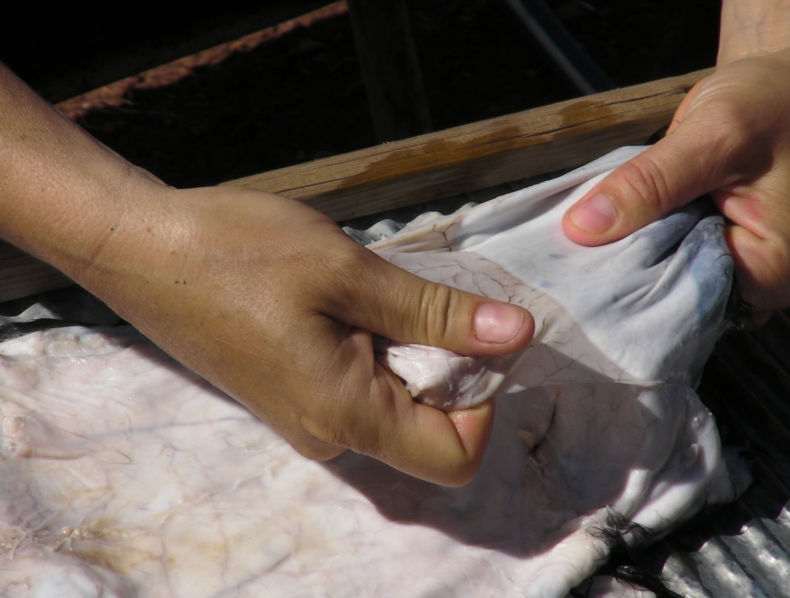
No need to exert excess pressure or overstretch.

Gently pull the hide as you tack it so there’s some tension in the skin. Tack the hide to your “stretcher.” We use salvaged wood pallets. It should be absorbed quickly, leaving only a slight oily residue.
#Acid tanning rabbit hides skin#
Now, using a sponge, rag or paint brush, swab the still-damp skin side of the hide with an ounce of neat’s-foot oil. Let them hang over a board or the back of a chair or other firm surface to drain. Remove the hides from rinse water they will be very heavy. If the pelt will be used as a rug or wall hanging, I probably wouldn’t. If skin or fur will spend a lot of time in contact with human skin, I’d use the baking soda. You need to make the choice to use baking soda based on your own end use of the skin.

However, this also may cause the preserving effects of the acid to be neutralized. Adding baking soda will neutralize some of the acid in the skin – this is good because there will be less possibility of residual acid in the fur to affect sensitive people. Stir and slosh the skins for about five minutes, changing the water when it looks dirty.Īt this point, some people add a box of baking soda to the rinse water. This is the rinsing process, which removes the excess salt from the skins. Use the stirring stick to carefully move the skins one by one into the other trash can. During the soak, fill your other trash can with clear, lukewarm water. Leave them to soak for 40 minutes, stirring from time to time to make sure all parts of the hides are exposed to the solution. Add the skins to the solution and stir, pressing the skins down carefully under the liquid with the stirring stick until the skins are fully saturated. Stir the battery acid in thoroughly.Īt this point, you can peel off the hide’s dried inner skin. While wearing gloves and an old, long-sleeved shirt, very carefully pour the battery acid down the inside of the trash can into the solution - don’t let it splash. Read the warning label and first aid advice on the battery acid container. When this solution is lukewarm, you are ready to add the battery acid. Pour the water over the salt and use the stirring stick to mix until the salt dissolves. Put the 16 cups of salt in a plastic trash can. Next, bring the remaining four gallons of water to a boil. Let this sit for an hour, then strain the bran flakes out, saving the brownish water solution. Boil three gallons of water and pour over the bran flakes. (Cut the recipe in half for fewer skins).Ī couple of hours before you plan to tan, soak the dried skins in clear, fresh water until flexible. This recipe makes enough tanning solution to tan four large animal skins or ten rabbit skins or about six medium-sized pelts such as groundhog. It was recommended by a friend and fellow trapper as a great inexpensive way to tan fur.ġ6 cups plain or pickling salt (not iodized)Ģ large plastic trash cans (30 gallon) and one lidģ½ cups battery acid (from auto parts store)

This recipe was taken from Mother Earth News.


 0 kommentar(er)
0 kommentar(er)
